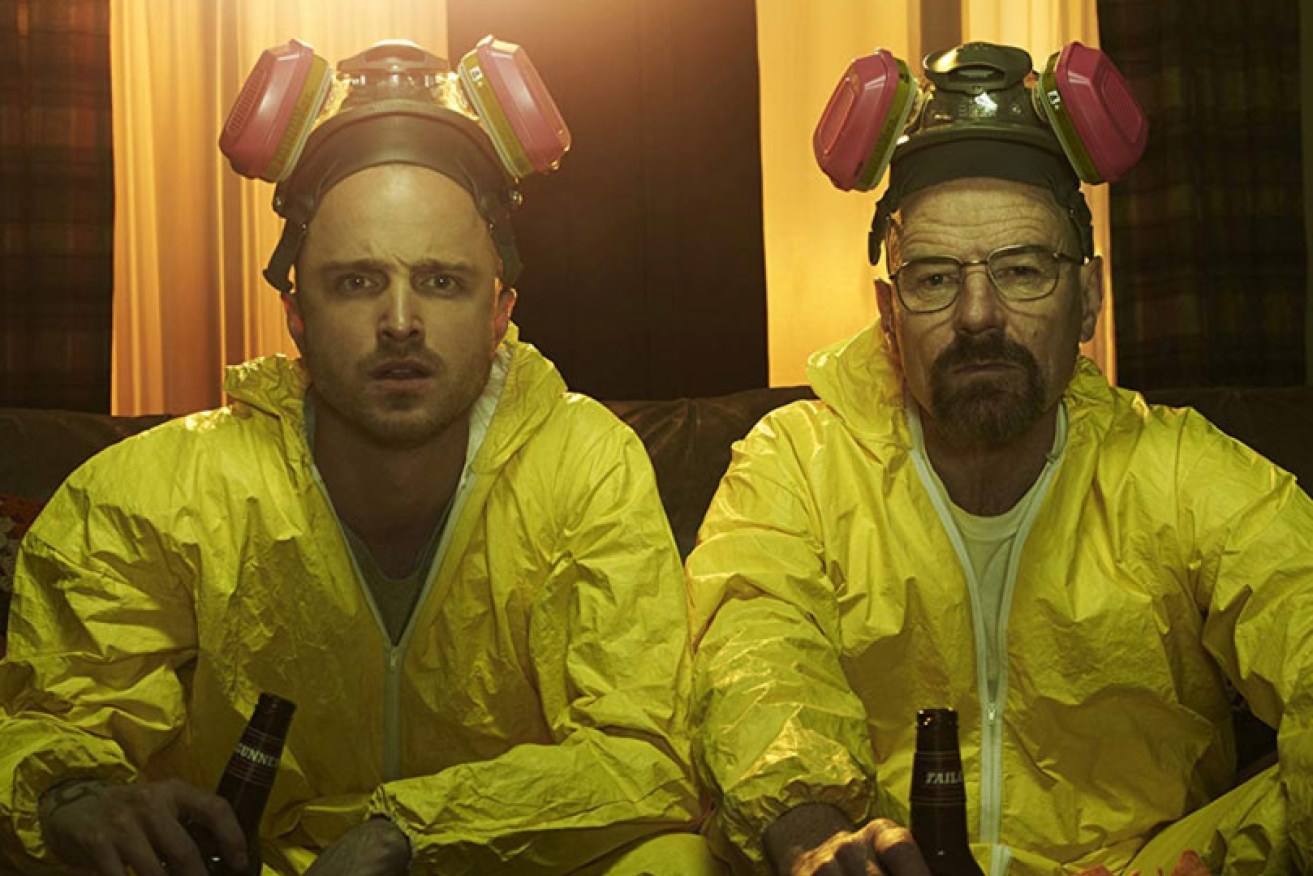Meth lingers in the air of former drug labs: Study


Jesse Pinkman (Aaron Paul) and Walter White (Bryan Cranston) were bad and so, so good in Breaking Bad. Photo: Sony Pictures Television
The harmful residue left by cooking up ice in residential homes could still be harming occupants, long after the police bust has come and gone, research has uncovered.
Flinders University has dedicated many years to detailing the health risks these ‘meth labs’ pose for their next residents.
This week, researchers released the results of their latest study, which analysed air samples from known contaminated homes to determine how much meth was still present.
The scary answer: A lot.
This meant the drug remnants and its toxins could be absorbed by occupants just through breathing.
- Related: Murder houses and ruined real estate
“Our study indicates inhalation exposure has the potential to result in significant intakes of methamphetamine, adding to more well-known risks such as dermal absorption and ingestion,” the university’s Jackie Wright said on Tuesday.
In Australia, the current guidelines surrounding former ‘meth lab’ homes take into account contamination on surfaces, but not the risk of inhalation exposure.
“These policies can significantly underestimate the risks in former meth houses when new owners aren’t aware, and therefore indicate the guidelines don’t currently address protective health measures,” Dr Wright continued.
Not a good influence
As well as the general uncomfortable thought of being exposed to an illicit and dangerous drug, there are serious and potentially long-term consequences of living in a former meth house that still has drug and chemical remains present.
Exposure can result in headaches, skin rashes, a persistent cough and a weakness for coming down with a cold or infection.
There’s also reports of children experiencing behavioural changes, exhibiting anger or aggressive behaviour.
What is frightening about this study’s results, Dr Wright said, is it adds to the exposure risk occupants already face in surface contamination in these properties.
In October, the same research team analysed surface swabs from inside known meth labs.
The study showed methamphetamine was still detected on home surfaces more than five years after the labs were busted and removed.
“Although the time since the cooking had taken place was significant, the levels of contamination were extremely high in both household items that were part of the house when cooking was taking place (blinds, carpets, walls, etc) and also in articles brought to the house post-cooking (rugs, toys, beds, etc),” Dr Kirstin Ross said at the time.
The path to treatment
The study team wants to see air analysis expanded to gain a better understanding of the level of contamination in affected homes.
Dr Wright said the study highlighted current practices underestimate the risk of exposure for people living in contaminated homes, and regulations must be addressed to ensure real inhalation risks are adequately dealt with.
“This data supports our assessment that the air phase is an important aspect of the transfer of methamphetamine contamination and the inhalation pathway is just as relevant as surface sampling when evaluating exposure risks.”








